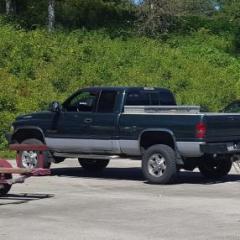- Replies 9
- Views 1.7k
- Created
- Last Reply
Top Posters In This Topic
-
Dieselfuture 2 posts
-
Gary L Moore 2 posts
-
Mopar1973Man 1 post
-
Royal Squire 1 post
Popular Days
Most Popular Posts
-
I'd have to agree, if the truck sits outside all night at them temperatures, all fuel should be jailed up. I could see how it would be an aid while the truck is running. But if it's already running th
-
have it on mine, just did a cold northern road trip over the past month. whenever I’d stop for fuel every 300-400 miles or so, I’d touch the filters and to drain, they were warm. So I’d say it’ll warm
-
No probably about it, FACT






Has anyone installed one of these? Will this actually prevent gelling say at deep negative temps?
My fuel froze last year at -30 even with fuel treatment. At those temps isn't there the chance that the fuel would gel
before the lift pump?
I would install if it would actually prevent the gelling, but I figure there is a point below freezing where it will not matter.